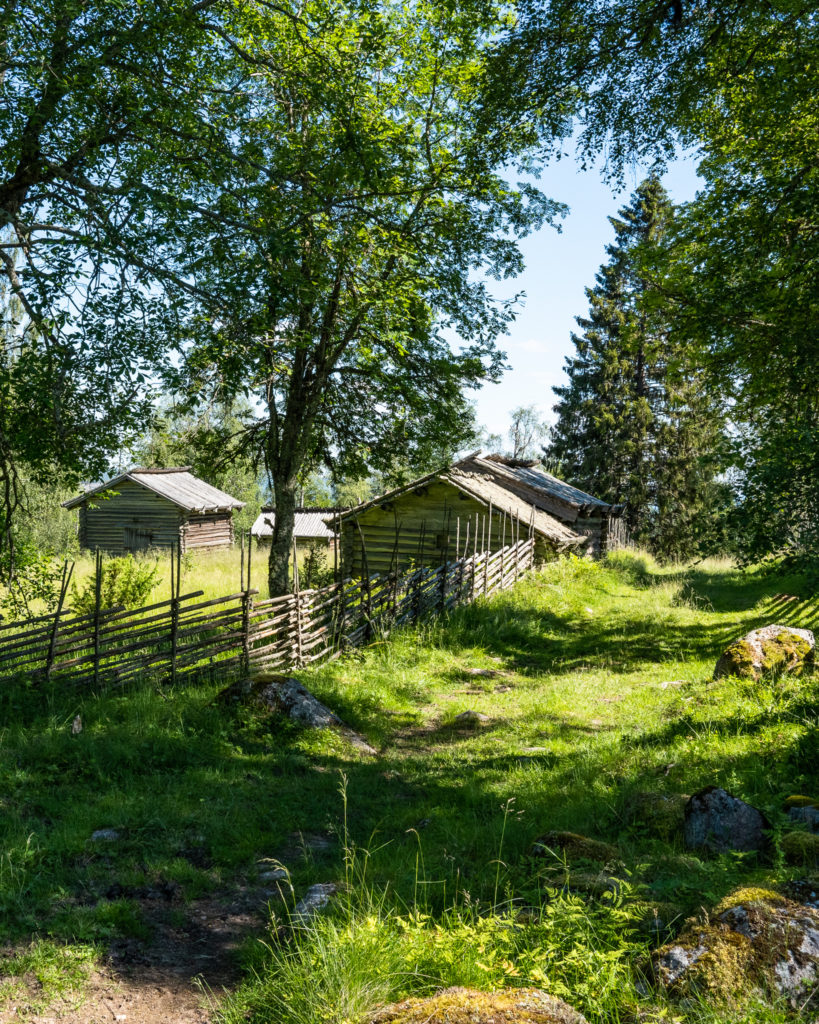Furudal, Dalarna
Who hasn’t been tempted to mark their visit on a location, just to leave a trace? Many summer houses have years and names written and carved into the walls of the cooking houses or cottages. On the summer farm Ärteråsen, these carvings take it one (or a few!) steps further. As the light trickles in through the small opening by the ceiling, it exposes carvings — everywhere. Ever since the 1600s, new carvings have been added to the walls. Years, names and symbols for particular farms are mixed with elaborate hunting scenes with armed men and horses. Most of these carvings exist in the cooking houses. Twelve of them remain out of the original 22. It’s not so strange to find the carvings here, as this is where the summer farm workers prepared the milk products, cooked, and slept.
The amount of cooking houses says something about the size of the summer farm. In the middle of the 19th century, Ärteråsen was one of the larger summer farm grounds in Sweden. One of the reasons is that the nearby iron mills Furudal gave the area prosperity. That is why around 200 animals grazed on the hills, with a stunning view over the lakes and forests of the Ore area. Despite many buildings having disappeared since, the amount of houses still standing makes for an impressive sight for visitors who climb the long hill from the parking lot to get there.




The grey cottages are in varying states — while some are in good condition, others are gently falling into decay. It is expensive and work-intensive to restore the houses, but the cultural organisation of Ärteråsen, Ärteråsens kulturförening, does it best to ensure the upkeep of the most valuable buildings. Together with support from the Counties Agency and local craftsmen, they’ve been able to restore the field fences and repair roofs, all based on how it used to be. Some of the buildings are used as summer houses and therefore maintained privately.
The summer farm was used until 1954, as the summer farm for the village Näset. Today, the visitor’s activities are instead run by the cultural organisation. The members gather for work days and help getting the cows to and from the summer farm. Someone bakes, so that visitors will find delicious cookies and buns in the café. Volunteers take turns to stay for a week in the overnight cottage to take care of the cows, guide visitors and keep the coffee pot ready. Sometimes, they arrange courses in milking, cheese making or mitten knitting with local yarn, in order to spread the knowledge and traditions. A lot of visitors come to the yearly cultural week to enjoy guided tours, local traditional food and church services. The younger visitors can play in an old cooking house to experience what it would have been like in the olden days. During special musical events, the cooking houses have been filled with groups of fiddlers and other folk musicians, meeting up to play folk music together.




Visitors don’t come only to enjoy the summer farm setting. Many hikers pass through on the hiking route Siljansleden which leads to the observation post. From this spot, they can enjoy an even better view of the miles after miles of forest and mountain sides. During the hike, the attentive hiker can also lower the gaze to spot rare orchids on the forest meadow. They continue to grow here, thanks to the efforts to preserve Ärteråsen and its summer farm environment.
Visit Ärteråsen
Check out the website and Facebook-page for location and opening hours, as well as my advice for visiting the summer farms.

